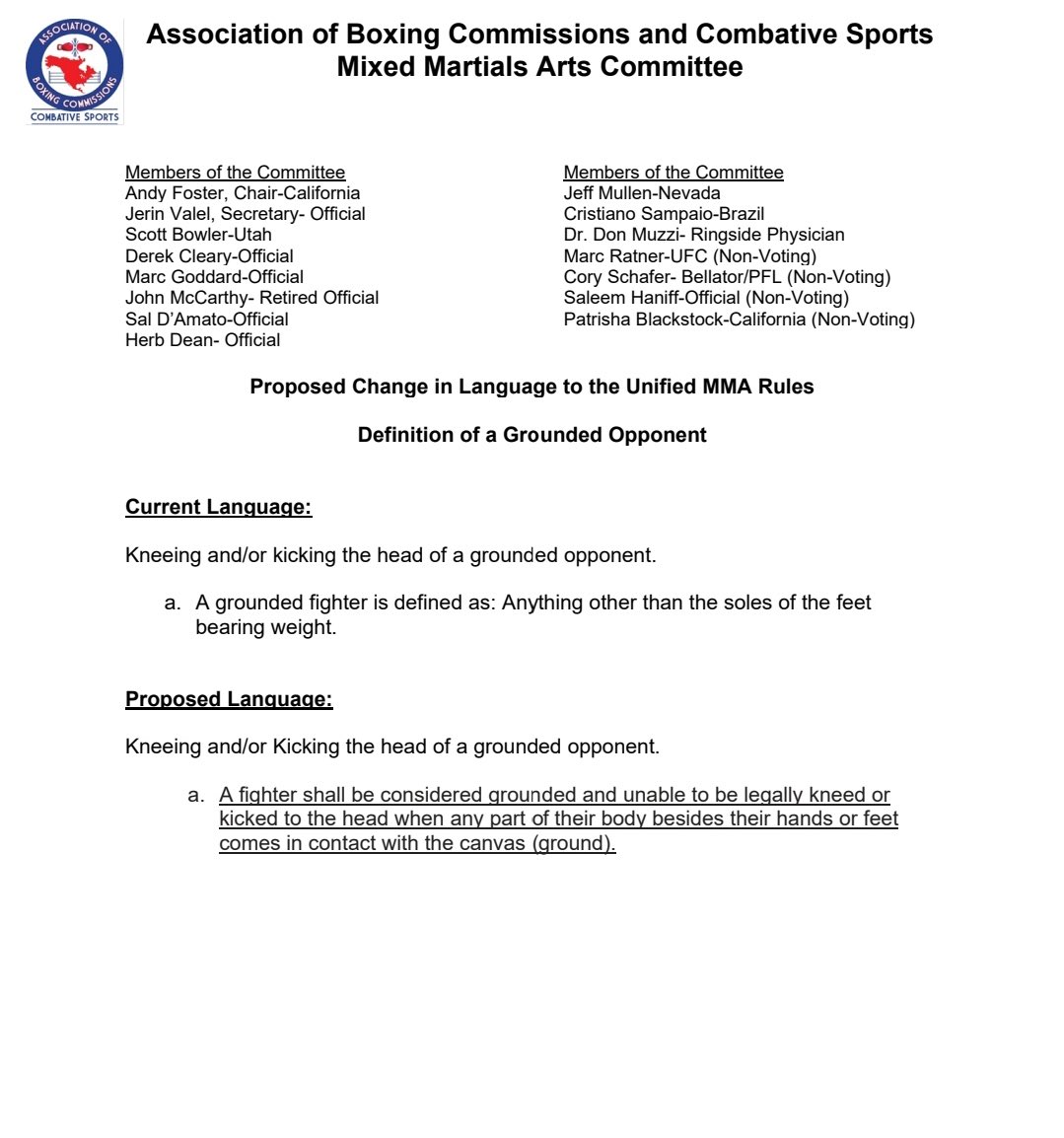It’s one of the biggest topics for polemic in the sport of MMA: do you allow knees to the head of a grounded opponent and what should be rightfully deemed as a ‘grounded opponent’?
Recently, we had an interesting situation when a main card opener for UFC 297 between Arnold Allen and Movsar Evloev produced one sequence that confused a lot of the fanbase. Marc Goddard had paused the bout in 3rd round, when the Englishman kneed Evloev in the head multiple times, while the latter was touching the ground in order to place himself as a grounded individual, unable to get kneed to the head.
Allen got a warning from the ref and Movsar had an opportunity to recover for a minute or so, before continuing the fight. No points were taken away, but Arnold Allen lost important momentum that he had built, when rocking Evloev with those knees. Fans were questioning this decision by the referee, recalling prior instances where similar situations were regarded as legal and the fight continued normally.
Here, we’ll explain reasons for that confusion and discuss a proposed rule change that will be brought to the table in next week’s meeting of the Association of Boxing Commissions and Combative Sports Mixed Martial Arts Committee.
What is a grounded fighter? Different commissions use different interpretations of the rule
The official unified rules of MMA state that a grounded fighter is defined as: “Any part of the body, other than a single hand and soles of the feet touching the fighting area floor. To be grounded, both hands palm/fist down, and/or any other body part must be touching the fighting area floor. A single knee, arm, makes the fighter grounded without having to have any other body part in touch with the fighting area floor. At this time, kicks or knees to the head will not be allowed.”
Where gray areas come into play and confuse a lot of fans is different athletic commissions having their own interpretations of this rule. Most of the commissions around the US use the ‘new’ understanding of the grounded fighter rule, which translates to fighters judged as grounded if they not only touch the fighting area floor but also have some weight bearing along with it.
So, people were wondering why did Goddard pause the fight when Movsar Evloev was just scraping the floor with the tips of his fingers? Answer is: the location and commission overseeing the bout, where two guys fought. In Ontario, commission credits a fighter to be grounded, if they only touch the ground with anything other than the soles of their feet.
That comes as a different judgment than when (for example) Alexa Grasso fought Valentina Shevchenko, in September of last year. In the middle of the 4th round Grasso stuffed a takedown attempt from ‘Bullet’, put her in a headlock and started unleashing knees to the head, while Shevchenko was just barely touching the ground, quite the same as Evloev last weekend. Herb Dean saw it as completely legal, as there was no particular weight bearing there and the fight continued.
Problems in judging (not only in MMA) arise when there is too much room left to interpret a rule set. This is definitely the case with knees to a grounded opponent rule in MMA. In the wake of controversy and one of the hottest topics in the UFC/MMA today, Andy Foster (current executive director CSAC) has a proposal about this rule for ABC’s meeting next week.
Foster will propose a change to two of the most controversial MMA rules next week
As reported by Ariel Helwani, the proposal states a change in language to the Unified MMA rules. Current language reads: A grounded fighter is defined as: Anything other than the soles of the feet bearing weight. While proposed language states: A fighter shall be considered grounded and unable to be legally kneed or kicked to the head, when any part of their body besides their hands or feet comes in contact with the canvas (ground).
This means that if a fighter has both of their feet and hands on the ground – they can still get legally kneed to the head. Unless other parts of the body, like an elbow or a knee of the fighter come in contact with the canvas, this would be perfectly legal. Such a change would disregard the whole weight bearing and pushing the gray area of the current rule.
Other than this, Foster, who is also the chairman of the rules committee for Association of Boxing Commissions and Combative Sports Mixed Martial Arts, will propose the abolition of the extremely controversial and polarizing 12-6 elbow rule. This is one of the most heavily debated rules in the MMA community, for over a decade now.
Many people are also debating if knees to a grounded fighter should be allowed in general and no restrictions be put on handling these blows. For now, let’s wait and see the first developments and the controversial rule getting sorted out.
What are your thoughts on the new proposals getting ready to be discussed in the upcoming week? It seems like things would get much more clear and it would certainly bring new options to finish a fight for the athletes.


